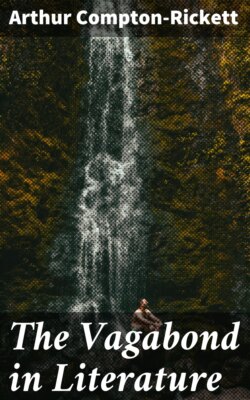Читать книгу The Vagabond in Literature - Arthur Compton-Rickett - Страница 9
На сайте Литреса книга снята с продажи.
V
ОглавлениеTable of Contents
There were literary Vagabonds in England before the nineteenth century. Many interesting and picturesque figures—Marlowe’s, for instance—arrest the attention of the student, and to some extent the characteristics noted may be traced in these. But every century, no less than every country, has its psychological atmosphere, and the modern literary Vagabond is quite a distinctive individual. Some I know are inclined to regard Goldsmith as one of the Vagabond band; but, although a charming Vagabond in many ways, he did not express his Vagabondage in his writings. The spirit of his time was not conducive to Vagabond literature. The spirit of the succeeding age especially favoured the Vagabond strain.
The Gothic Revival, and the newly-awakened interest in medievalism, warmed the imaginations of verse men and prose men alike. The impulse to wander, to scale some “peak in Darien” for the joy of a “wild surmise,” seized every artist in letters—poet, novelist, essayist. A longing for the mystic world, a passion for the unknown, surged over men’s minds with the same power and impetuosity as it had done in the days of the Renaissance. Ordinary life had grown uglier, more sordid; life seemed crushed in the thraldom of mechanism. Men felt like schoolboys pent up in a narrow whitewashed room who look out of the windows at the smiling and alluring world beyond the gates. Small wonder that some who hastened to escape should enter more thoroughly than more cautious souls into the unconventional and the changeful.
The swing of the pendulum was sure to come, and it is not surprising that the mid-century furnishes fewer instances of literary Vagabonds and of Vagabond moods. But with the pre-Raphaelite Movement an impulse towards Vagabondage revived. And the era which started with a De Quincey closed with a Stevenson.
